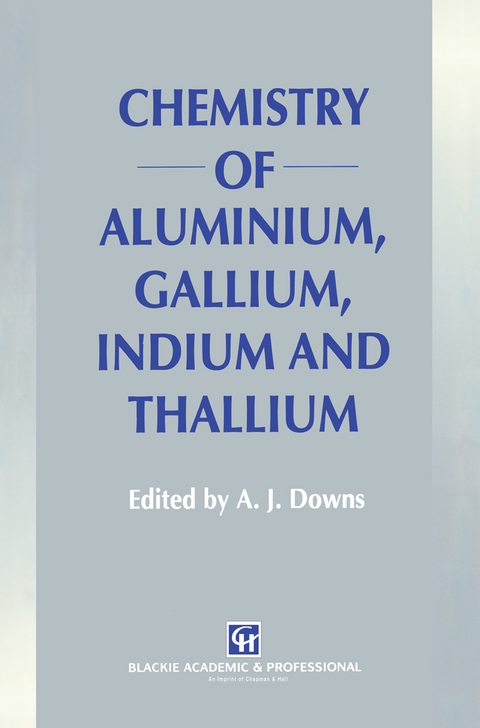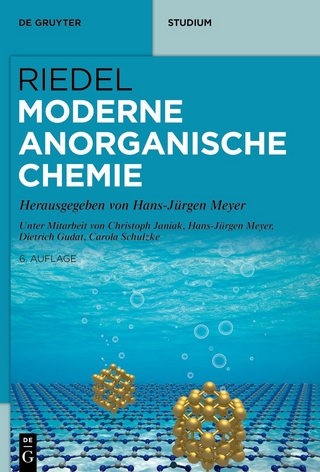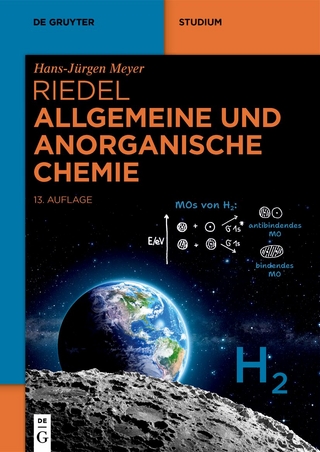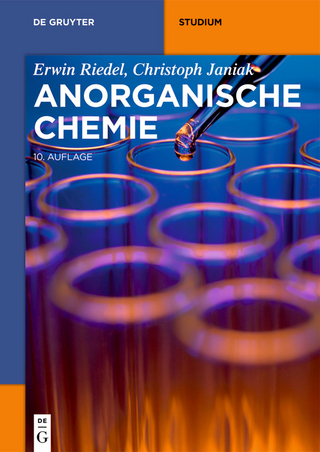
Chemistry of Aluminium, Gallium, Indium and Thallium
Springer (Verlag)
978-94-010-4960-3 (ISBN)
Boron has all the best tunes. That may well be the first impression of the Group 13 elements. The chemical literature fosters the impression not only in the primary journals, but also in asteady outflowofbooks focussing more or less closely on boron and its compounds. The same preoccupation with boron is apparent in the coverage received by the Group 13 elements in the comprehensive and regularly updated volume of the Gmelin Handbook. Yet such an imbalance cannot be explained by any inherent lack ofvariety, interest or consequence in the 'heavier elements. Aluminium is the most abundant metal in the earth's crust; in the industrialised world the metal is second only to iron in its usage, and its compounds can justifiably be said to touch our lives daily - to the potential detriment of those and other lives, some would argue. From being chemical curios, gallium and indium have now gained considerably prominence as sources of compound semiconductors like gallium arsenide and indium antimonide. Nor is there any want ofincident in the chemistriesofthe heavier Group 13 elements. In their redox, coordination and structural properties, there is to be found music indeed, notable not always for its harmony but invariably for its richness and variety. Thisbook seeks to redress the balance with a definitive, wide-rangingand up-to-date review of the chemistry of the Group 13 metals aluminium, gallium, indium and thallium.
1 Chemistry of the Group 13 metals: some themes and variations.- 1.1 Introduction: some characteristics of the Group 13 elements.- 1.2 History and occurrence.- 1.3 Physical properties of metal atoms.- 1.4 Chemical properties of the elements and their compounds.- 1.5 Organisation of subsequent chapters.- References.- 2 The elements.- 2.1 Characteristics and physical properties.- 2.2 Extraction and refining of aluminium.- 2.3 Production of gallium, indium and thallium.- 2.4 Alloying of aluminium.- 2.5 Uses of the elements.- References.- 3 Inorganic derivatives of the elements.- 3.1 Introduction.- 3.2 Derivatives of the trivalent state.- 3.3 Derivatives of the lower valence states.- 3.4 Intermetallic derivatives.- References.- 4 Properties and uses of oxides and hydroxides.- 4.1 Aluminium oxides and hydroxides.- 4.2 Nomenclature.- 4.3 Physical properties and methods of synthesis.- 4.4 Activated alumina.- 4.5 Oxides and hydroxides of gallium, indium and thallium.- References.- 5 III-V Compounds.- 5.1 Introduction.- 5.2 Properties of the compounds.- 5.3 Binary compound synthesis.- 5.4 Influences on electrical properties.- 5.5 Intermetallic alloys.- 5.6 Epitaxial layer growth.- 5.7 Chemical reactivity.- 5.8 Conclusion.- References.- 6 Organometallic compounds: synthesis and properties.- 6.1 Introduction and basic literature.- 6.2 Synthesis of organo derivatives.- 6.3 Metal vapour reactions.- 6.4 Physical properties and structures.- 6.5 Complexes with neutral bases and their reactivity.- 6.6 Organo derivatives of the elements in lower oxidation states.- 6.7 Mixed metal derivatives.- Bibliography and reviews.- References.- 7 Organic transformations mediated by Group 13 metal compounds.- 7.1 Organoaluminium compounds.- 7.2 Organogallium and -indium compounds.- 7.3 Organo thallium compounds.- References.- 8 The coordination and solution chemistry of aluminium, gallium, indium and thallium.- 8.1 Introduction.- 8.2 Hydride complexes.- 8.3.1 Introduction.- 8.4 Complexes with Group 16 donors.- 8.5 Group 15 derivatives.- 8.6 Aquo complexes and solution species.- 8.7 Lower oxidation states.- References.- 9 The elements in the environment.- 9.1 Introduction.- 9.2 Geochemistry.- 9.3 Environmental aspects.- 9.4 Biological aspects.- 9.5 Toxicology.- References.- 10 Analytical methods.- 10.1 Aluminium.- 10.2 Gallium.- 10.3 Indium.- 10.4 Thallium.- References.
| Zusatzinfo | XII, 526 p. |
|---|---|
| Verlagsort | Dordrecht |
| Sprache | englisch |
| Maße | 155 x 235 mm |
| Themenwelt | Naturwissenschaften ► Chemie ► Anorganische Chemie |
| Naturwissenschaften ► Chemie ► Physikalische Chemie | |
| Technik ► Elektrotechnik / Energietechnik | |
| Technik ► Maschinenbau | |
| ISBN-10 | 94-010-4960-2 / 9401049602 |
| ISBN-13 | 978-94-010-4960-3 / 9789401049603 |
| Zustand | Neuware |
| Informationen gemäß Produktsicherheitsverordnung (GPSR) | |
| Haben Sie eine Frage zum Produkt? |
aus dem Bereich


